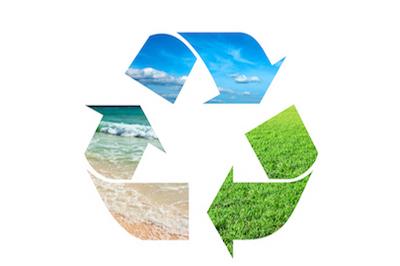Reuse and recycling in Denmark

This law formalised the fact that Danish local authorities have extensive legal ground for self-determination. This means that local authorities to a certain degree have the right to take initiatives within the area of waste management and separate collection for recycling . Naturally, this is under the condition that the local authorities work towards common national goals presented in the national waste management plan in force at any time.
Local authorities are currently responsible for collecting all household waste as well as all industrial waste for incineration and landfilling, while industrial waste for recycling is separated at source and collected and treated on general market conditions. Most types of recyclable wastes are reprocessed abroad, but many Danish enterprises, private and public, separate and pre-treat the waste before it is exported. Waste is primarily collected and transported by private companies.
Separate collection of municipal waste
Due to the self-determination of Danish local authorities, there is no such thing as the “Danish way” of collecting household waste for recycling. However, overall requirements specified in the Statutory Order on Waste, are that it is mandatory for the local authorities to introduce:
- collection schemes for paper and cardboard in settlements with more than 1 000 inhabitants
- collection schemes for recyclable glass packaging waste in settlements with more than 2 000 inhabitants
- collection schemes for recyclable metal and plastic packaging waste.
There is no requirement that these fractions are collected separately, but it is required that the majority of these fractions are recycled or in some cases prepared for reuse, which makes separate collection the preferred option in the municipalities. Glass, paper, cardboard, plastic and metal waste have traditionally been collected at bring points or at civic amenity sites. However, due to stricter demands for higher recycling rates, these fractions are increasingly also collected via door-to-door collections. In some municipalities, a kerbside collection system is also established for bulky waste, which in some cases also includes glass, cardboard and metal waste.
Civic amenity sites are managed by local authorities that decide on the types of waste that citizens can deliver. With the exception of food waste and mixed household waste, most waste streams can be handed in at these sites.
With respect to bio-waste there is no legal requirement for (separate) collection, but many local authorities have established separate collection of garden waste, which is used for controlled bulk composting. At the moment, other organic wastes are thus currently not sorted out of the residual waste. However, organic waste is a focus area in the latest National Waste Management Plan, and a number of local authorities have established separate collection systems where source-separated organic waste is used for the generation of biogas and fertiliser in biological treatment facilities. Citizens are also allowed to compost part of their organic waste at home and some local authorities offer support in terms of e.g. guidance or containers for composting.
Collection and deposit system for beverage packaging
The main legal act in the Danish legislation is the Statutory Order on Waste, but the Statutory Order on a deposit on beverage packaging from 2001 has also had significant influence on the rates for waste collection and recycling in Denmark. More specifically, this Order has made room for a deposit-return system for beverage packaging, which today is one of the most efficient collection systems for beverage packaging in the world. Despite the fact that the amount of one-way packaging for beverages is increasing the collection rate remains stable at around 89 %.
The system began with a formal collaboration between the beer and soft drinks industry and the retail sector in 1995. The focus was on establishing a common deposit-return system for what was at the time primarily refillable glass bottles. The main goal was to ensure that the grocery trade was paid for sorting the constantly increasing volumes of different types of beverage packaging. As a result of this collaboration, Dansk Retursystem (Danish deposit & return system) was founded in 2000.
Dansk Retursystem is now a privately-owned company, which has been granted the exclusive right to operate the Danish deposit-return system until 2019. The company is run not-for-profit and its business is based on fees paid by importers and producers of products on which deposits are payable. The Danish Ministry of Environment and Food regulates the company.
At the time when Dansk Retursystem was established, canned beverages were not allowed in the country. This ban was abrogated together with the Statuary Order on a deposit on beverage packaging. Today the system covers various types of packaging from both alcoholic and non-alcoholic beverages including re-usable glass bottles, recyclable glass and plastic bottles as well as metal cans.
Commercial waste
There is a general requirement in the Statuary Order on Waste for companies to source separate their waste. All recyclables are collected and treated on general market conditions. Local authorities are responsible for collecting commercial waste for incineration and landfilling.
Sources
National fact sheet for Denmark, European Commission, 2016
Dansk Retursystem











